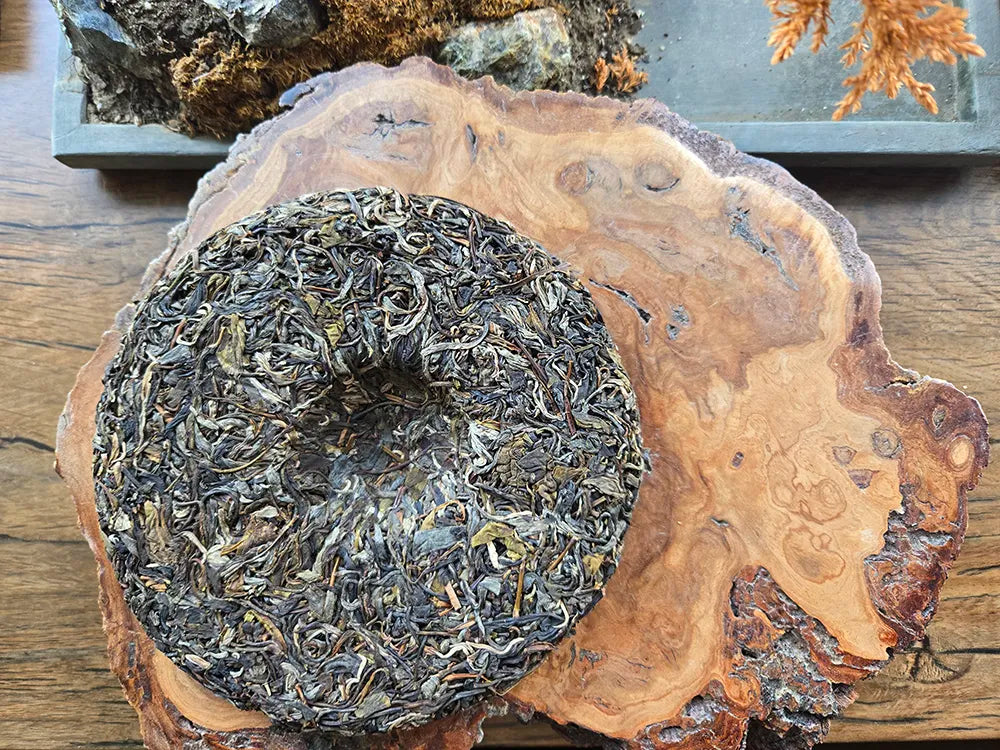Tea lovers worldwide enjoy the unique taste and health benefits of pu-erh tea, also called pu erh tea. They especially appreciate how it ages.
Pu-erh tea is of two principal types. Shou (ripe) and Sheng (raw) Pu’er come from the same tea plant, camellia sinensis. Both types undergo fungal fermentation. However, shou and sheng Pu’er differ greatly in taste, smell, and their production methods.
This post will discuss the differences between Shou Pu’er and Sheng Pu’er. The guide will cover their unique qualities and factors to consider when choosing the right type for your taste.
What is Pu-erh Tea?
People also call pu’er tea Preserved Tea. Producers mainly make it in Yunnan Province and southern China. Most people think of ripe and raw pu'er tea as having a high quality, strong, earthy taste. Processed, raw, or aged, it provides a unique flavour.
However, the traditional method of making tea entails a laborious process of microbial fermentation and continuous aging. Ancient traders stamped pu-erh tea into cakes made from compressed dry tea leaves for easier storage and circulation.
In the world of Pu'er tea, one can find two varieties, Shou or Mature tea and Sheng or Raw tea.
Both teas differ in taste and preparation, but the tea community treats them with equal respect and honour.
The respect and honour given to these teas make it important to explain the method first. This helps us understand the differences between them.

Shou Over Sheng Tea
Shou Pu’er and Sheng Pu’er differ because of their processing methods.
Shou Pu’er (Ripe Pu’er)- This type of tea can be considered new as it was developed in the 1970s. The tea makers create the tea with some important ideas in mind.
For example, someone sprinkles water over dry, tart tea tree leaves. Then, the leaves are covered. This method is known as "wet piling" or wo dui.
This in turn enables the tea to age in a rich warm and humid environment allowing the flavour to blossom quicker. This method also shortens the waiting time for tea lovers. They can enjoy young Shou tea right away. It doesn’t need many jars for aging to develop its flavour.
The total time this process consumes is approximately 45 to 60 days.
Sheng Pu’er, or Raw Pu’er, is a type of tea. People call it raw pu'er. Producers make it using a traditional method.
They first lose their aroma. In this case, workers pick, wither, and pan-fire the pu’er leaves. This process stops any oxidation, and then the sun dries the leaves.
Thereafter they are either twirled into bricked leaves or are left flat. Shou puér avoids fermentation, thereby making it mature slowly and naturally.
The complexity of this tea increases with age. Young Sheng Pu’er has a sharp, green taste. In contrast, older Sheng Pu’er is earthier and smoother.
Flavour Profiles: Shou Pu-erh vs Sheng Pu-erh
People who have tried both shou and sheng pu’er tea know they taste remarkably different. This difference comes from the unique ways each type is processed. These methods change the flavours a lot.
Shou Pu’er: If you enjoy dark, rich, and earthy flavors, you will likely find this tea satisfying. It has a great mix of wood, dried fruit, and earthy aromas.
Shou goes through a special fermentation process. This means it lacks the sharp and rough tastes of young Sheng pu’er. Instead, it has a smooth and mellow flavour.
In fact, many people find it quite bold and strong yet smooth at the same time, which allows them to feel a sense of relief. Since people now view shou pu’er as aged tea, it provides a very rich and deep flavour profile.
Sheng Pu’er: Sheng Pu’er tea begins young. It has a strong and crisp taste. This taste is like flowers, light greens, and sometimes fruits.
In time, Sheng Pu-erh does age and adolescent aged pu-erh has a bamboo fugue, wood and sweetness to its profile. Young Sheng Pu-erh tea has a sour and astringent taste. However, over time, natural fermentation balances the sourness.
As years go by, better layers form, creating a complex mix. This makes it more appealing to tea drinkers who enjoy fine tea.

Aging and Storage
Aging for Shou and Sheng Pu-erh is equally important however the impact is not the same on both.
Shou Pu’er: After cold brewing, this tea has an aged taste. It is easy to sip right after brewing.
Yes, Shou Pu-erh does mature over time. However, these changes are more complex than those of Sheng Pu-erh.
Many history buffs enjoy this cup when it brews fresh after harvest. If they choose to age it, they can taste a slightly milder version of the original.
Sheng Pu’er is well-known and respected. This is because it offers unique qualities from many years of aging.
The best way to store Sheng Pu’er is in a cool, humid place. It should also be away from strong smells.
All these conditions, when met, offer the tea-drinking experience levered upwards for decades.
Why Choose Shou or Sheng Pu-erh Over the Other
Factors like taste preference and patience for aging are important in deciding if someone will use Shou or Sheng Pu’er.
Looking for quick options: For a tasty and pleasant cup of tea without the need to wait, Shou Pu’er is the one for you. With a rich earthy taste and a mellow dark profile, Shou Pu’er is perfect for drinking straight away.
For a Dynamic Aging Experience: Sheng Pu’er is an excellent option if you enjoy teas that change with time. Investing in Sheng Pu’er is a great idea if you like collectible teas. The taste improves as time continues.
Sheng Pu’er offers new flavors that many enjoy. It can also be a calming choice for those who like a slightly astringent taste. You can find these teas in our Pu erh range at Tea Life.
Personal Health and Wellness Goals: All types of Pu’er tea provide many benefits. They are rich in antioxidants. They also help with digestion, weight loss, and detoxification.
While much differs with each type of tea, Shou and Sheng both do have caffeine.
Brewing Tips for Shou and Sheng Pu-erh
Shou Pu’er: The hot water should be at 95–100°C (203–212°F) to brew pu. The first dip should last for 10-20 seconds, and you can increase the duration for subsequent dips.
You can steep Shou Pu’er multiple times, so you can steep the first infusion for a longer time to reveal new flavours.
Shrawnge Pu’er: For younger sheng pu’er, use water that is 85 to 95 degrees Celsius. This is 185 to 203 degrees Fahrenheit. For older sheng pu’er, start with water at 95 degrees Celsius and go up to 100 degrees Celsius.
Follow this with short steeping sessions of about 10-15 seconds and increase the duration as you repeat the firing. Scrub pu’er produces pu’er tea that you can steep many times. This tea has a slightly different taste each time.
Last Words on Pu erh tea
Shou Pu’er and sheng pu'er are unique in their own way and am sure every tea lover has a taste for each of these. With Shou Pu’er, you can always enjoy its earthy taste. Those who prefer lighter flavours can drink it anytime.
Sheng Pu’er, on the other hand, improves with time. It becomes a stronger and more engaging cup of tea as the months pass.
The production of both types of Pu’er is part of Chinese culture. This means that neither style of tea gets boring. Every tea lover can enjoy something new with each sip. Allow your taste buds and cravings to explore.
Cautionary Note
Pu’er tea is usually safe to drink. However, it has caffeine, so people sensitive to caffeine should be careful.
People with certain medical conditions or who are pregnant should talk to their doctor before adding Pu’er tea to their diet.
Whether you enjoy Shou Pu’er for its smooth taste or Sheng Pu’er for its rich flavours, each sip connects you to Pu’er tea culture. You will also experience a unique taste journey with every cup. Shop our Pu erh tea range at Tea Life today!



